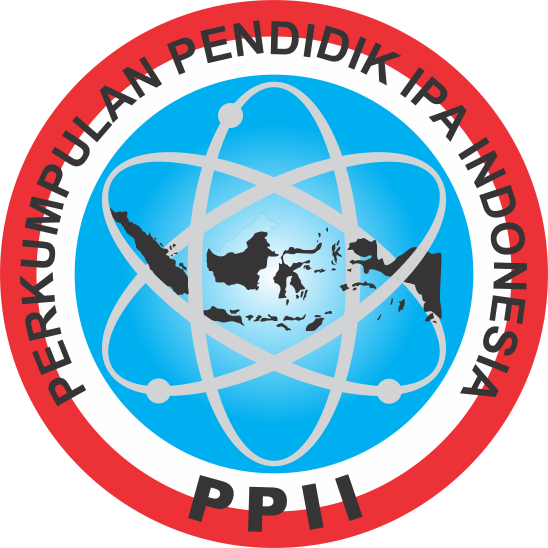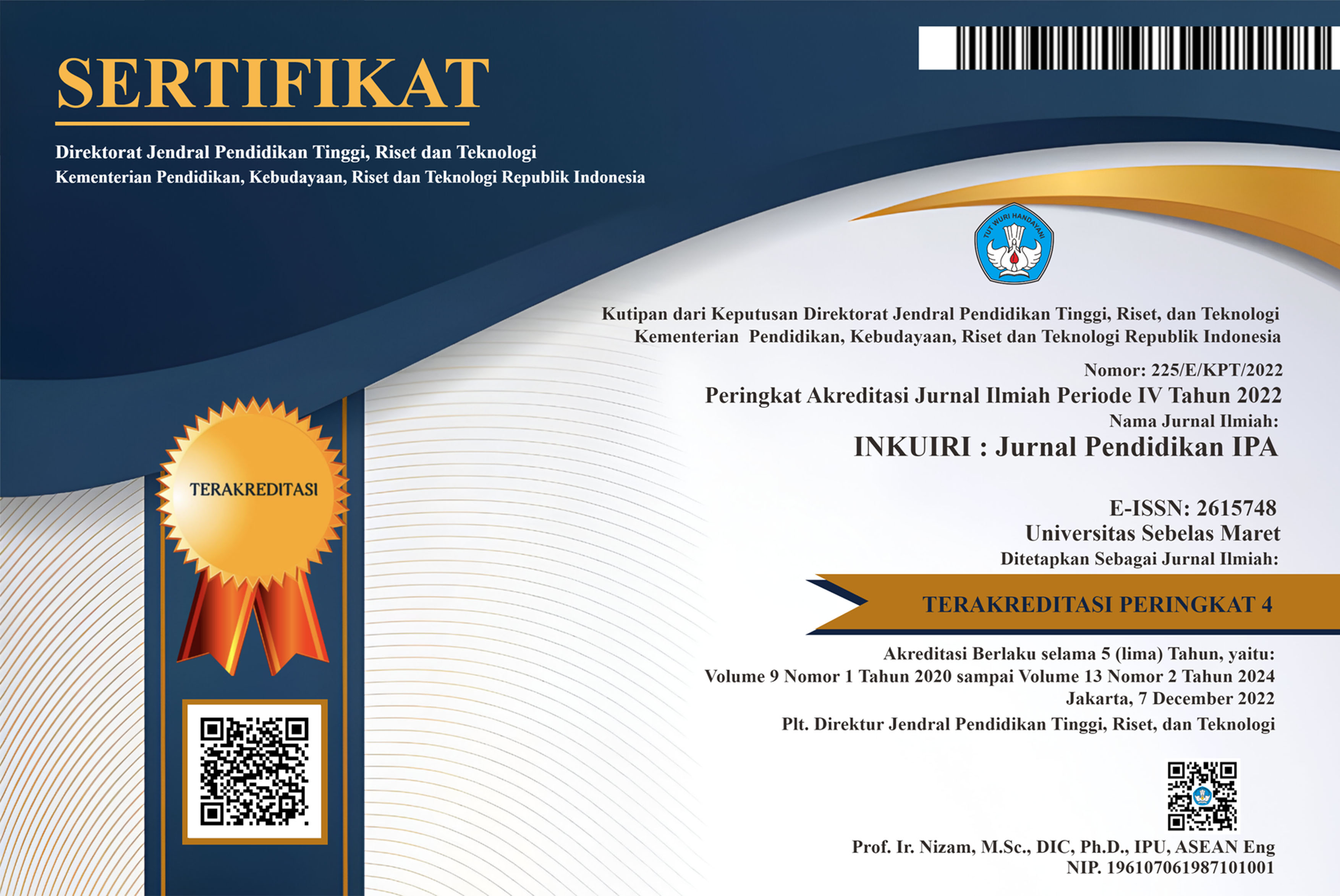ANALISIS RESPON BELAJAR SISWA MENGGUNAKAN TAKSONOMI SOLO MATERI SUHU DAN KALOR
Abstract
Penelitian ini bertujuan untuk menganalisis respon belajar siswa berdasarkan taksonomi SOLO pada materi suhu dan kalor di SMA Negeri 3 Samarinda. Jenis penelitian yang digunakan adalah penelitian deskriptif. Subjek penelitian ditentukan dengan teknik purposive sampling yaitu kelas X MIA-1 yang berjumlah 32 siswa. Respon belajar siswa dianalisis menggunakan taksonomi SOLO (Structure Of Observed Learning Outcomes) yang terbagi menjadi 5 bagian, yaitu prastruktural, unistruktural, multistruktural, relasional, dan abstrak diperluas. Hasil penelitian menunjukkan respon belajar siswa pada level unistruktural sebesar 87,35% dengan kategori baik sekali, level multistruktural sebesar 88% dengan kategori baik sekali, level relasional sebesar 64,10% dengan kategori cukup, dan level abstrak diperluas sebesar 73,4% dengan kategori baik.
This study aims to analyze student learning responses based on the SOLO taxonomy on temperature and heat material at SMA Negeri 3 Samarinda. The type of research used is descriptive research. The research subjects were determined by purposive sampling technique, namely class X MIA-1, totaling 32 students. Student learning responses were analyzed using the SOLO (Structure of Observed Learning Outcomes) taxonomy which is divided into 5 parts, namely prestructural, unistructural, multistructural, relational, and expanded abstract. The results showed that student learning responses at the unistructural level were 87.35% in the very good category, the multistructural level was 88% in the very good category, the relational level was 64.10% in the moderate category, and the abstract level was expanded to 73.4% with good category.
Keywords
Full Text:
PDFReferences
Biggs, J., & Collis, K. (1989). Towards a Model of School-based Curriculum Development and Assessment Using the SOLO Taxonomy. Australian Journal of Education, 33(2), 151–163. https://doi.org/10.1177/168781408903300205
Dede, C. (2009). Comparing Frameworks for “21st Century Skills.” 16.
Fägerstam, E., & Blom, J. (2013). Learning biology and mathematics outdoors: Effects and attitudes in a Swedish high school context. Journal of Adventure Education and Outdoor Learning, 13(1), 56–75. https://doi.org/10.1080/14729679.2011.647432
Fernández, E., Nieto, Z., & Mendoza, L. (2019). Styles of reasoning according to the taxonomy structure of observed learning outcome of John Biggs in the students of geometry of the specialty of mathematics. Journal of Physics: Conference Series, 1329, 012005. https://doi.org/10.1088/1742-6596/1329/1/012005
Gilbert, R. (2004). Studying Society and Environment: A Guide for Teachers.
Higgins, C., McAvinia, C., O’Leary, C., & Ryan, B. J. (2019). A Study Of First Year Undergraduate Computing Students’ Experience Of Learning Software Development In The Absence Of A Software Development Process. Conference Papers. Retrieved from https://arrow.dit.ie/schfsehcon/27
Krathwohl, D. R. (2002). A Revision of Bloom’s Taxonomy: An Overview. Theory Into Practice, 41(4), 212–218. https://doi.org/10.1207/s15430421tip4104_2
Siswaningsih, W., Dwiyanti, G., & Gumilar, C. (2013). Penerapan Peer Assessment dan Self Assessment pada Tes Formatif Hidrokarbon untuk Feedback Siswa SMA Kelas X. Jurnal Pengajaran MIPA, 18(1), 107–115. https://doi.org/10.18269/jpmipa.v18i1.263
Sudijono, A. (2006). Pengantar Evaluasi Pendidikan. Jakarta: PT Raja Grafindo Persada.
Watling, C. J., & Ginsburg, S. (2019). Assessment, feedback and the alchemy of learning. Medical Education, 53(1), 76–85. https://doi.org/10.1111/medu.13645
Refbacks
- There are currently no refbacks.






